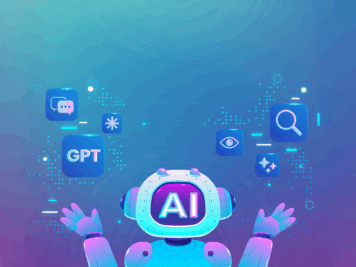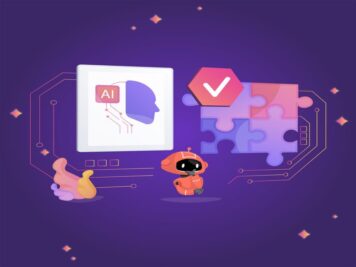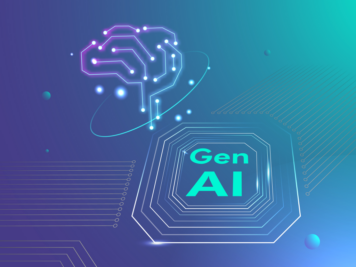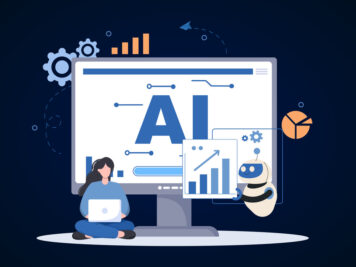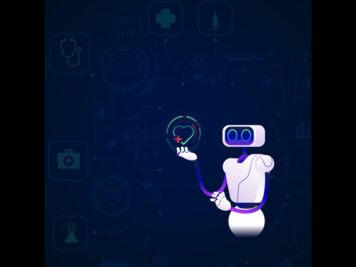In the last 12 months, about 71% of businesses reported using Gen AI regularly in at least one of their core businesses functions [Mckinsey state of AI 2025 report]. That alone signal how fast our relationship with AI is evolving from curiosity to embedded capability.
But, what about the next 12 months? It won’t be Gen AI alone. The focus is shifting to a different breed entirely- Agentic AI. Why? Because output alone is not enough. Today’s enterprises require systems that initiate, decide, and generate outcomes independently. And that’s the fundamental distinction.
While Generative AI generates outputs, such as text, code, and media, Agentic AI initiates actions, such as making decisions, orchestrating tools, and performing tasks from beginning to end. The distinction lies in how they work, not just in the technology. It is now important for product builders and tech leaders to understand this difference.
This article examines the functional divide between these two categories (Agentic AI vs. Generative AI), their strengths, and why combining them wisely might be the key to the next generation of AI-native products.
Generative AI are the creative engine
Generative AI models are probabilistic engines that produce novel content across modalities—text, images, audio, code, even 3D designs. Models like GPT-4o, Midjourney, Claude, and Gemini are trained on massive corpora to detect patterns and extend them in new directions.
What makes them remarkable is their fluency. Feed in a prompt, and you get compelling output in seconds. That capability has made GenAI tools ubiquitous in workflows across design, development, content, and support.
High-leverage applications
| Content production | Ad copy, product descriptions, scripts |
| Developer acceleration | Code snippets, documentation scaffolds |
| CX augmentation | Chat responses, knowledge summarization |
| Knowledge synthesis | Summarizing reports, structuring unstructured data |
What do these use cases have in common? They’re largely bounded. Inputs and outputs exist within a single interaction. There’s no persistent memory or goal-directed behavior.
That’s the ceiling.
Core limitation
Generative AI are probabilistic engines, not agents. They are excellent at single-step, input-to-input transformations. But they lack goal-oriented behavior, long term memory, and autonomy to operate across systems.
Agentic AI are the autonomous operator
Agentic AI takes things a step further. It introduces autonomy. Agentic systems don’t just wait for prompt. They allow systems to:
- Set goals
- Plan execution steps
- Use external tools
- React to changes
- Learn from outcomes
This is AI that doesn’t just respond. It operates.
How agentic systems work
- Planning: Turn goals into multi-step workflows
- Action: Trigger APIs, run code, update systems
- Context retention: Store and apply memory across interactions
- Feedback: Adapt based on results
In essence, Agentic AI applies the reasoning capabilities of LLMs to real-world execution.
Where it’s already showing value
| Customer support | Resolving tickets end-to-end |
| DevOps | Detecting anomalies, initiating fixes |
| Research automation | Synthesizing findings, taking next steps |
| Sales operations | Prospecting, outreach, follow-ups |
| Internal tooling | Managing pipelines, compliance checks |
Frameworks like LangChain, AutoGen, CrewAI are enabling these capabilities by abstracting orchestration, memory, and action planning.
But autonomy comes at a cost
Designing autonomy isn’t just a technical challenge. It’s a systems challenge that raises serious questions about accountability, traceability, and trust.
Autonomy introduces ambiguity. Who owns an AI-driven decision? What guardrails are in place? What visibility do users have into the system’s reasoning process? These aren’t just edge cases—they’re design constraints. Ethics, transparency, and control will be differentiators.
There’s also a practical ceiling – single-tasks agents face limitations under heavy loads. They struggle with coordination, fail to adapt effectively across diverse tasks, and are prone to errors and hallucinations.
As our Principal Data Scientist, Abhishek Gupta, puts it:

Need a full scoop? Access the prediction here
In other words, the future of autonomous agents won’t be a single agent doing everything –it will be a coordinated ecosystem of agents, each handling a specialized function and working in concert to deliver real outcomes. That’s what will unlock scalable, reliable, and autonomy across enterprise–grade applications.
Head-to-Head: Generative vs. Agentic AI
| Feature | Generative AI | Agentic AI |
| Core Function | Content generation | Autonomous action |
| Primary Mode | Reactive (prompt-based) | Proactive (goal-based) |
| Scope | Single-step tasks | Multi-step processes |
| Interaction | Input → Output | Sense → Decide → Act → Learn |
| Tools | LLMs, diffusion models | LLMs + planners + memory + environment |
| Typical Output | Text, images, code | Task completion, decisions, tool execution |
| Ideal Use Cases | Creative content, summarization, code suggestions | Workflow automation, operational agents, decision-making systems |
Why this matters to founders and product teams
Most of today’s AI use cases still look like assistive tooling. Helpful, sure—but still rely on humans for orchestration.
GenAI accelerates tasks. But it doesn’t solve them.
Agentic AI changes the equation. Instead of faster outputs, you get autonomous operations.
The next wave of AI-native products will solve problems end-to-end.
This shift matters because:
It changes how you design features
Instead of “generate a document,” you build “review contract terms, highlight risks, and flag non-compliance.”
You’re moving from tools to outcomes.
It changes your infrastructure
GenAI can live at the UI layer. Agentic AI needs memory, context, planning, and access to APIs.
You’re not just calling an API—you’re orchestrating systems.
It changes who you hire
A prompt engineer won’t cut it. You need system thinkers, orchestration architects, and AI native engineers and devs who can wire up tools, data, and goals into one intelligent loop.
Where they work together (and why that’s the real opportunity)
These two aren’t in competition. In fact, their intersection is where real value emerges.
Imagine an AI agent (Agentic AI) tasked with resolving a complex support issue. It:
- Diagnoses the customer’s problem
- Navigates through internal tools
- Executes a resolution strategy
Now add a GenAI layer:
- The resolution message is drafted empathetically
- Contextual product documentation is generated in real time
- A follow-up survey is personalized for feedback
Other synergy scenarios
Product Dev: Agentic AI manages backlog + sprint cycles, GenAI writes stories and documentation
Healthcare: Agentic AI monitors patient data, alerts anomalies; GenAI generates reports for clinicians
Enterprise Workflows: Agentic AI connects Salesforce, Slack, and internal systems; GenAI crafts daily digests, client updates, and board-ready summaries
When deployed together, Agentic AI provides the “brain,” while Generative AI provides the “voice.”
The future isn’t ” Agentic AI vs. Generative AI.” Its Agentic AI+ Generative AI, working together. If you are a founder, CTO, product leader building for scale, understanding this difference isn’t optional- it’s your competitive edge.
The risk if you get this wrong
Companies that don’t understand this distinction end up with tools that “demo well” but fail in production.
- You think you’re building autonomy, but your product still needs babysitting.
- You build for output speed, but the real bottleneck is task complexity.
- You over-rely on GenAI when your customers actually want AI that acts.
Here’s the truth: Generative AI is already being commoditized. It’s available everywhere.
What will differentiate you isn’t what your AI can generate. It’s what it can achieve.
So where do you start?
If you’re an early-stage founder:
Don’t chase “AI-first”—chase outcome-first. What real job can your system do better than a human?
Use GenAI to get fast feedback. Use Agentic loops to validate utility.
If you’re a product leader:
Audit where your product is spending human effort. Are there decisions or processes that can be encoded into goals?
Look beyond UI add-ons. Think about what your user would ask an assistant—not a tool—to do.
If you’re a CTO:
Build your orchestration layer. Agents need planning, memory, feedback, and tool access.
Focus on observability. You can’t control what you can’t debug.
Don’t over-index on LLMs. The value is in the system, not the model.
How this plays out over the next 12–18 months
The AI stack is bifurcating.
Content-heavy workflows (e.g. marketing, documentation, summarization) will lean heavily on GenAI.
Goal-driven workflows (e.g. support, ops, dev automation) will demand Agentic AI.
Your product roadmap should reflect this.
Early movers are already embedding agentic logic into everything from CRM workflows to internal ops. The long-term advantage isn’t just faster execution—it’s intelligent systems that learn and adapt without manual direction.
You may also find this interesting to watch if you want to explore the challenges and best practices of adopting multi-agent systems—and how to fine-tune them for real-world impact.
Conclusion
Generative AI wowed the world with what it could write, draw, and speak. Agentic AI will win by doing what it can do.
If you are building the next wave of AI-native products, the question isn’t “Which model is smarter?” It’s ” Which system ships outcomes with or minimal human intervention?” That’s where Agentic AI leads. It’s time to stop focusing on clever outputs and start designing for intelligent execution.
Ready to move forward? At Talentica, our team of AI-native developers understands the DNA of intelligent systems. From GenAI to classical ML, from secure data pipelines to full-stack AI deployment, we know how to deliver production-ready intelligence — fast, reliably, and at scale.
Our team brings together GenAI specialists, classical ML experts, data architects, and full-stack product thinkers, all collaborating to craft AI systems that are functional and perform at scale. Whether you need domain-specific LLMs, AI agents, LLM-powered search, or precision-tuned ML models, we partner with you to build intelligence where it matters most — tailored to your product, your users, and your goals. Interested? Let’s Talk
